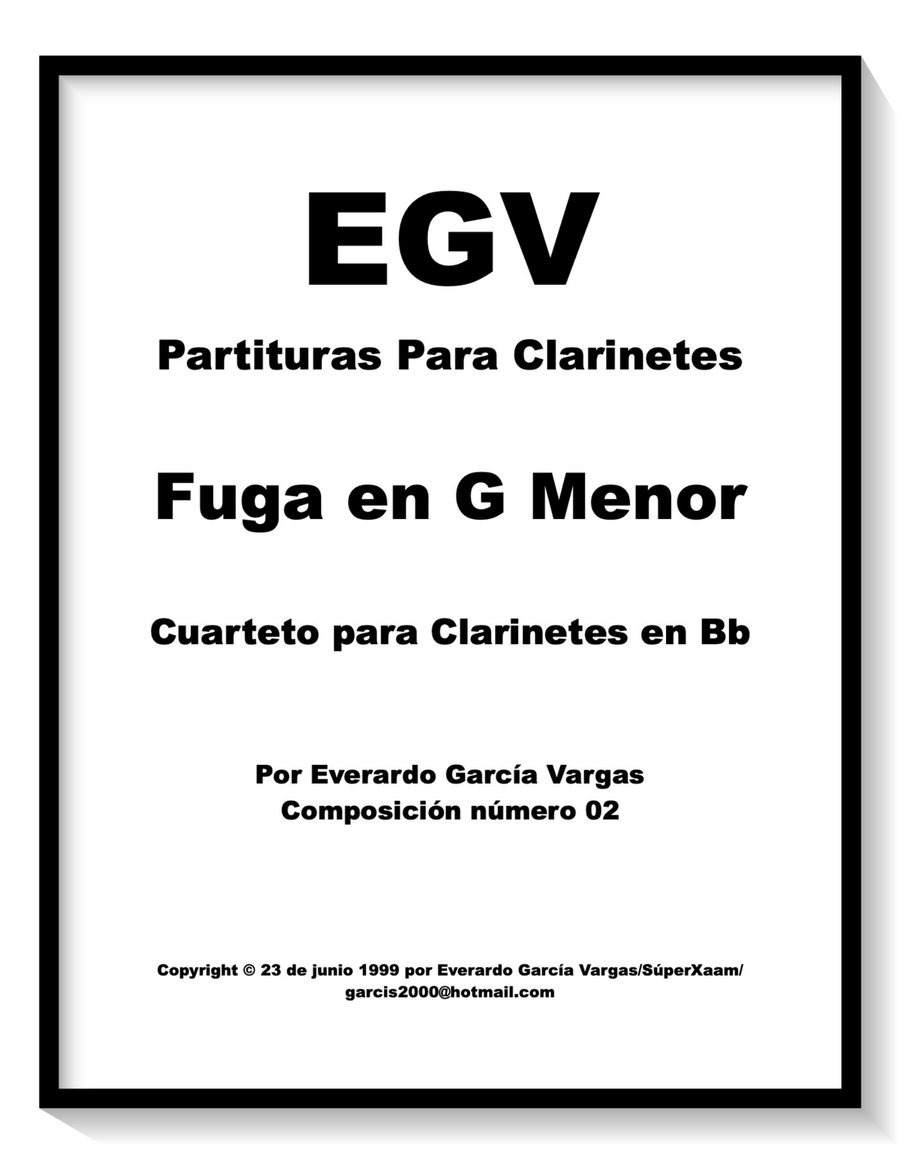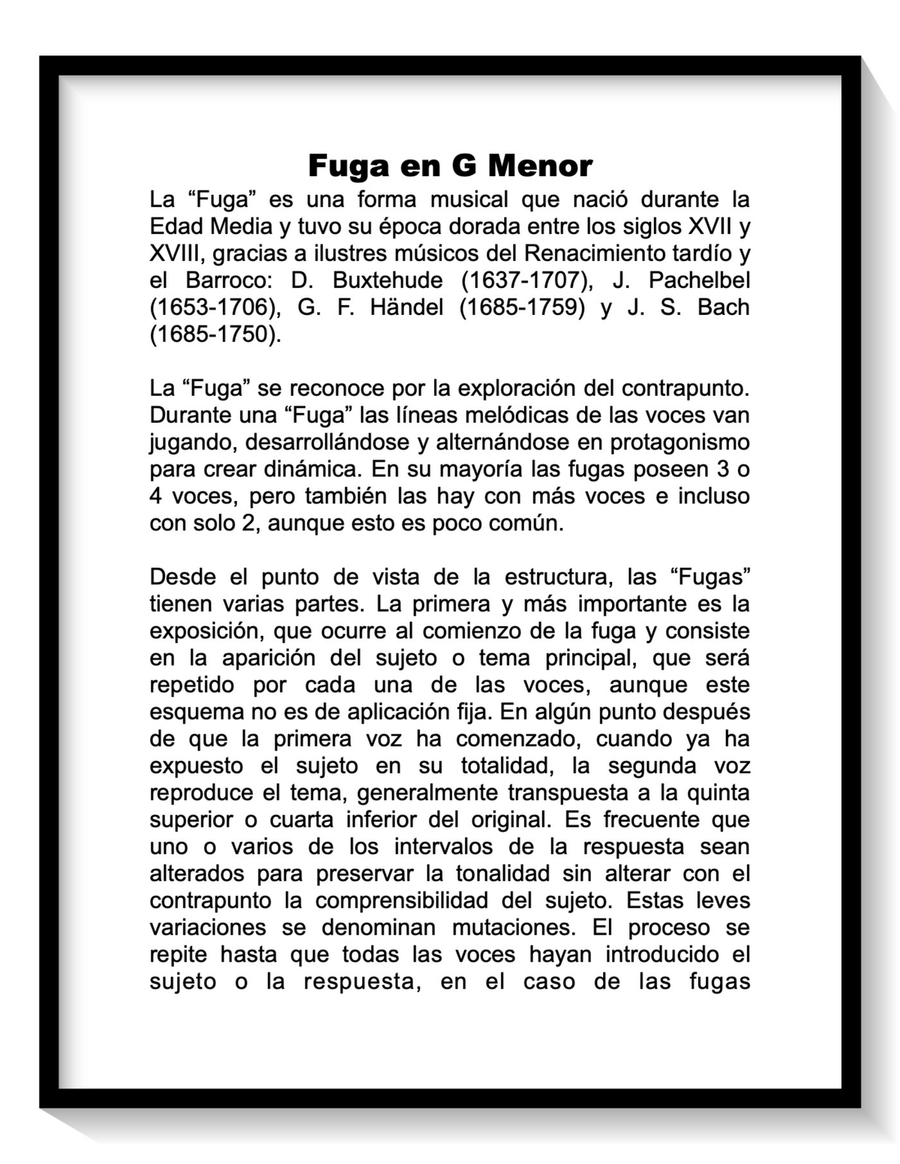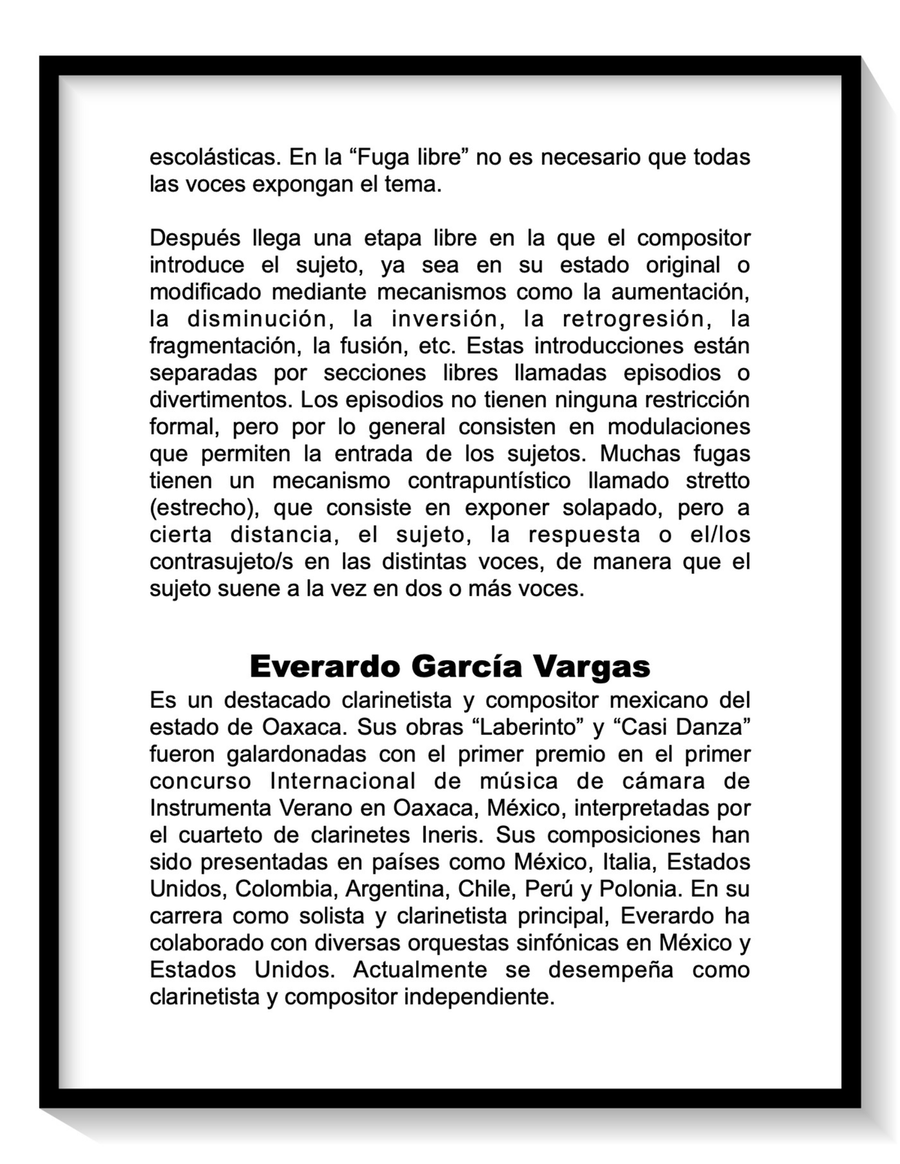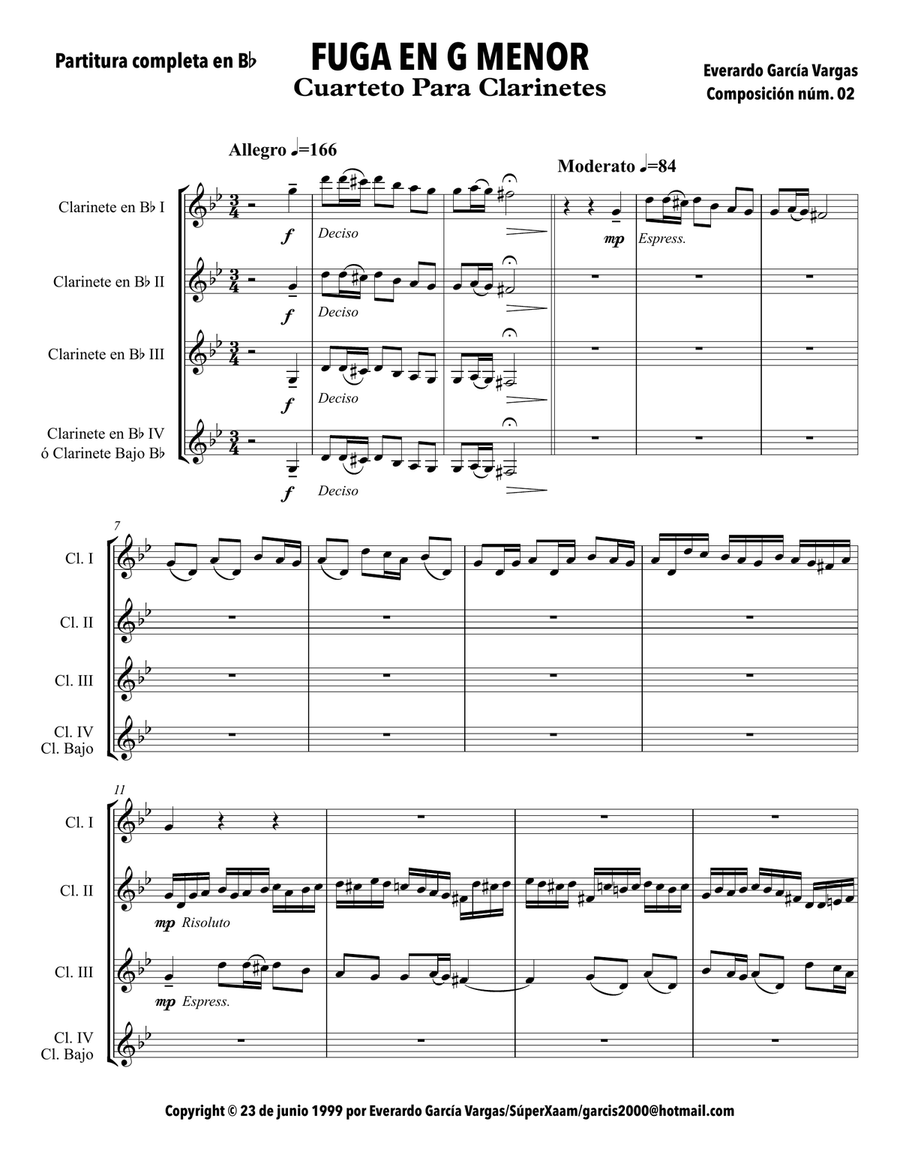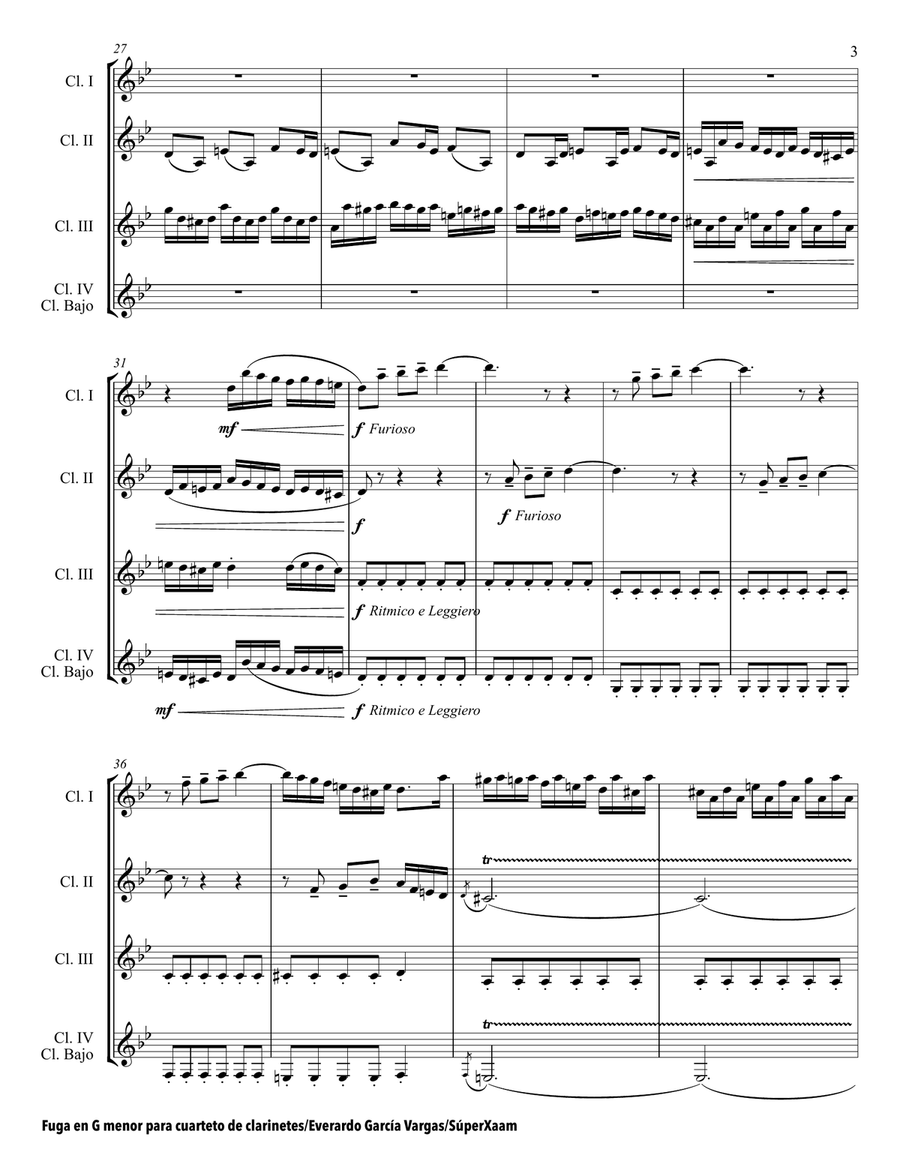Clarinet Quartet, Woodwind Ensemble - Level 3 - Digital Download
SKU: A0.1621739
Composed by Everardo García Vargas. This edition: audio, pdf. Baroque, Chamber, Classical, Latin, Spiritual. 25 pages. Everardo García Vargas #1190593. Published by Everardo García Vargas (A0.1621739).
Fugue in G Minor - Clarinet Quartet
The fugue is a musical form that emerged during the Middle Ages and enjoyed its golden age between the 17th and 18th centuries, thanks to illustrious musicians of the late Renaissance and Baroque periods: D. Buxtehude (1637-1707), J. Pachelbel (1653-1706), G. F. Händel (1685-1759), and J. S. Bach (1685-1750).
The fugue is recognized for its exploration of counterpoint. During a fugue, the melodic lines of the voices play, develop, and alternate in prominence to create dynamics. Most fugues have three or four voices, but there are also those with more voices and even only two, although this is rare.
Structurally, fugues have several parts. The first and most important is the exposition, which occurs at the beginning of the fugue and consists of the appearance of the main subject or theme, which will be repeated by each voice, although this pattern is not fixed. At some point after the first voice has begun, when it has already fully presented the subject, the second voice reproduces the theme, usually transposed to a fifth higher or fourth lower than the original. It is common for one or more of the intervals in the response to be altered to preserve the tonality without altering the comprehensibility of the subject through counterpoint. These slight variations are called mutations. The process is repeated until all voices have introduced the subject or, in the case of scholastic fugues, the response. In the “Free Fugue,” it is not necessary for all voices to present the theme.
Then comes a free stage in which the composer introduces the subject, either in its original state or modified through mechanisms such as augmentation, diminution, inversion, retrogression, fragmentation, fusion, etc. These introductions are separated by free sections called episodes or divertimenti. The episodes have no formal restrictions, but generally consist of modulations that allow the introduction of the subjects. Many fugues have a contrapuntal mechanism called stretto (narrow), which consists of exposing the subject, response, or countersubject(s) in the different voices, overlapping but at a certain distance, so that the subject sounds simultaneously in two or more voices.
This product was created by a member of ArrangeMe, Hal Leonard’s global self-publishing community of independent composers, arrangers, and songwriters. ArrangeMe allows for the publication of unique arrangements of both popular titles and original compositions from a wide variety of voices and backgrounds.
About Digital Downloads
Digital Downloads are downloadable sheet music files that can be viewed directly on your computer, tablet or mobile device. Once you download your digital sheet music, you can view and print it at home, school, or anywhere you want to make music, and you don’t have to be connected to the internet. Just purchase, download and play!
PLEASE NOTE: Your Digital Download will have a watermark at the bottom of each page that will include your name, purchase date and number of copies purchased. You are only authorized to print the number of copies that you have purchased. You may not digitally distribute or print more copies than purchased for use (i.e., you may not print or digitally distribute individual copies to friends or students).
